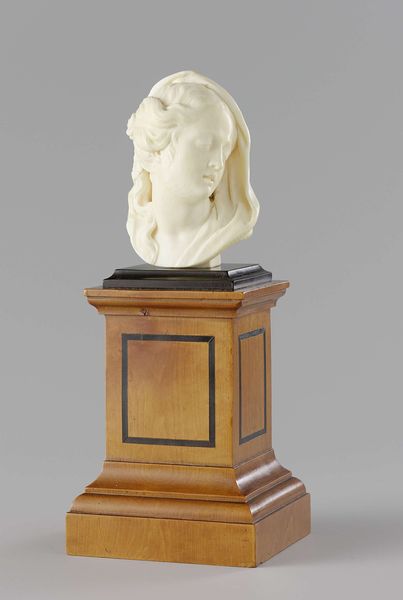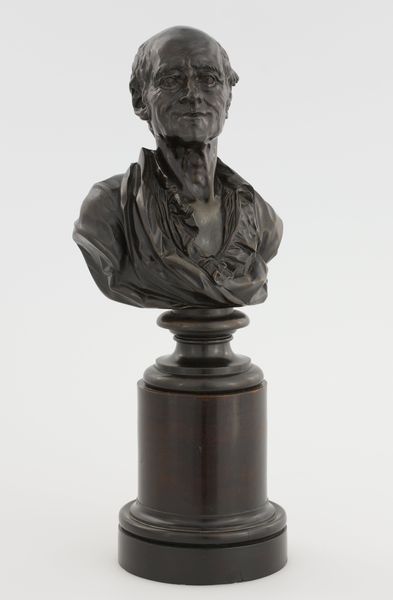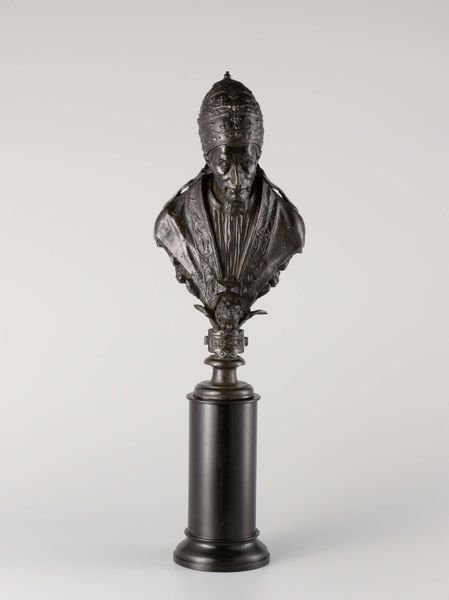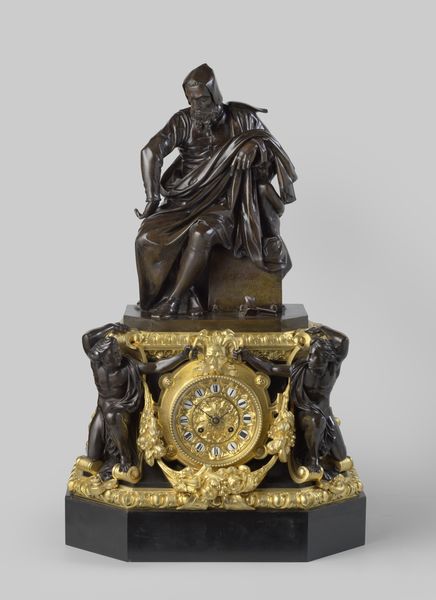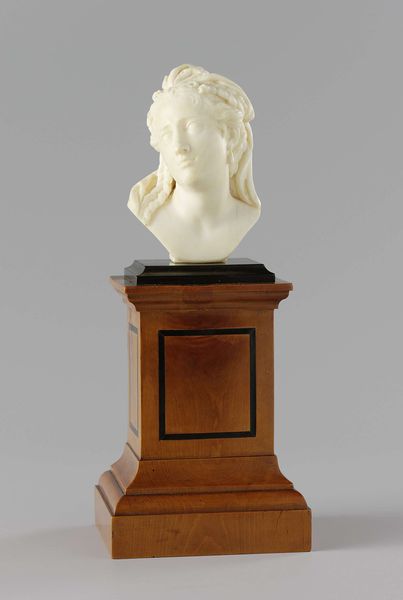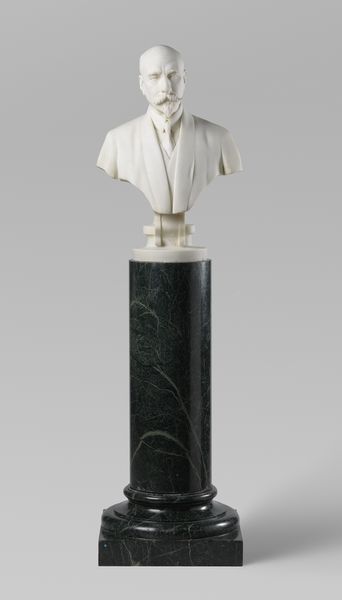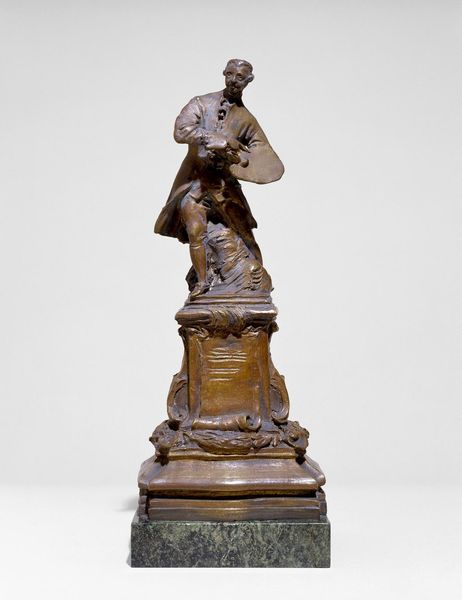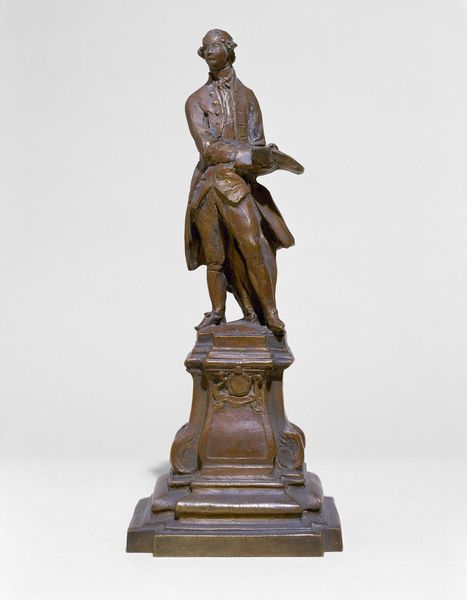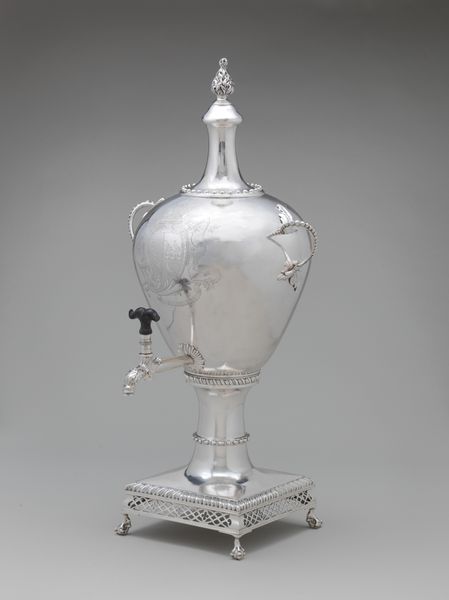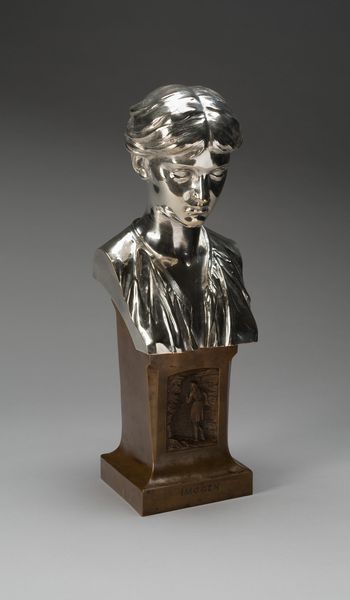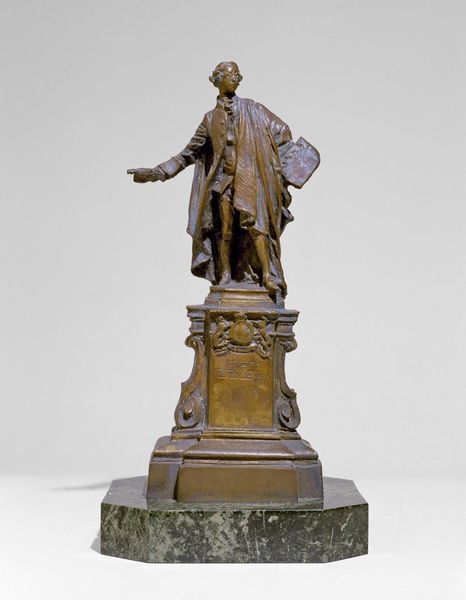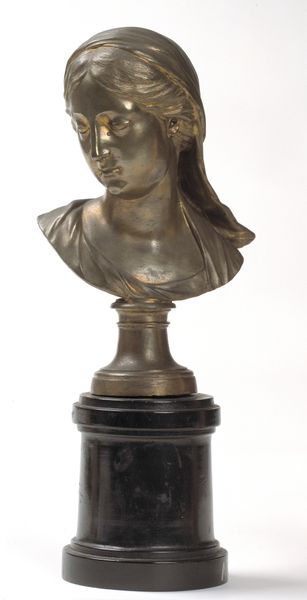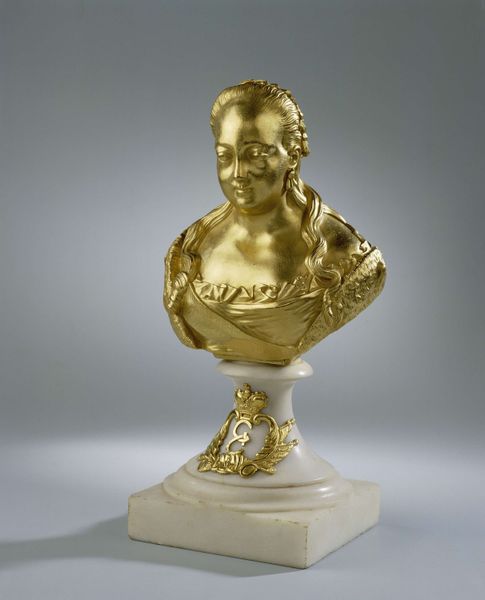
sculpture, marble
#
portrait
#
neoclacissism
#
classicism
#
sculpture
#
history-painting
#
marble
Dimensions: height 179.0 cm, width 73.0 cm, depth 73.0 cm, width 73.0 cm, depth 73.0 cm, height 90.5 cm, weight 482 kg, weight 204.5 kg
Copyright: Rijks Museum: Open Domain
Jean-Antoine Houdon sculpted this imposing bust of Pierre André de Suffren de Saint-Tropez in unpainted marble, likely sometime in the late 18th century. Marble is a metamorphic rock, prized for sculpture since antiquity. Transforming it requires skilled labor. Houdon would have begun with a rough block, gradually carving away stone using chisels, rasps, and drills. The smooth, pale surface is achieved through laborious polishing. The choice of marble speaks to the ambition of both artist and subject. Houdon was a leading sculptor of his day, and marble was a material strongly associated with permanence and classical ideals. The material elevates Suffren, a celebrated naval officer, placing him in the same company as ancient heroes. The weight of the stone, both literal and metaphorical, adds to the sense of authority and accomplishment. Ultimately, the sculpture stands as a testament to the enduring power of skilled handcraft, and the social importance attached to certain materials.
Comments
rijksmuseum about 2 years ago
⋮
The Fourth Anglo-Dutch War broke out in 1780. Britain attacked the Netherlands for supporting the American Revolution. The British besieged Dutch settlements in India and Ceylon, among other places. The diminished Dutch navy called upon the help of its ally, France. The French vice-admiral De Suffren defeated the British fleet in five naval battles.
Join the conversation
Join millions of artists and users on Artera today and experience the ultimate creative platform.
